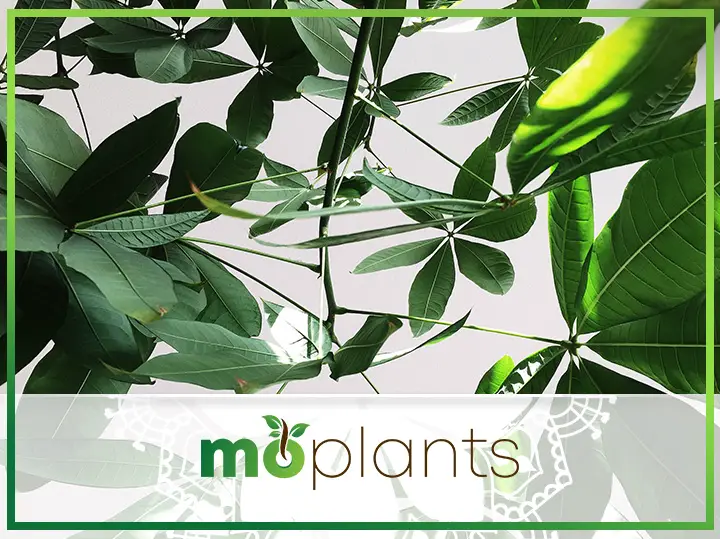The tall and beautiful umbrella plant may not be the trendiest houseplant of the season, but it is undoubtedly one of the most low-maintenance plants you can grow indoors. This tropical beauty is very undemanding and will grow peacefully in any corner of your home. You can place it near a window to add some brightness to your décor or have it flank the entryway to incorporate some color and texture into your space.
The vibrant umbrella plant is native to Taiwan, Hainan, and Australia. However, you can find it pretty much everywhere these days. Although it is more commonly known as the umbrella plant, some other aliases for this houseplant include octopus, parasol, Hawaiian umbrella, and Australian ivy palm. As you may have guessed already, this plant gets its name from its uniquely shaped foliage that resembles an umbrella.
It is also a fast grower. In an average home environment, this dazzling plant can grow up to six feet. However, in its native habitat, an umbrella tree plant can grow as tall as 50 feet. Therefore, this houseplant can become the tallest focal point of your home within a year with some care and affection.
Another great thing about growing an umbrella plant indoors is that you can either choose to keep it as a tall specimen flanking a doorway or have it as a compact potted plant displayed on your coffee table. It is also highly adaptable and can thrive in less-than-ideal conditions.
Introduction: Umbrella Plant
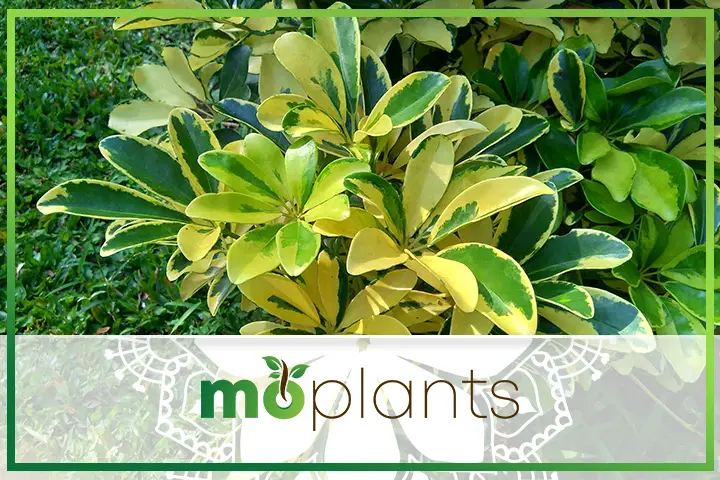
The botanical name of the umbrella plant is Schefflera, and it belongs to the Araliaceae family. It is classified as a broadleaf evergreen shrub or small tree and constitutes a genus comprising two identical-looking species: Schefflera actinophylla and Schefflera arboricola.
Schefflera actinophylla is the larger and taller variety of the plant, featuring long oval leaves that grow from a central stalk and droop elegantly to form a shape reminiscent of an umbrella. Young Schefflera plants have four to six leaflets growing from a thin stem, whereas a mature plant may boast up to 16 leaves. It is the taller of the two species and can grow between 40 to 50 feet in its native habitat – the tropical rainforests of Australia and New Guinea. Indoors, this plant typically grows up to 15 feet.
On the other hand, Schefflera arboricola also features glossy oval leaves growing in an umbrella formation, forming a tight cluster on thin stalks. But unlike its cousin, this plant is relatively short and compact, earning the nickname Dwarf Schefflera. However, it is not tiny by any means. Mature Schefflera arboricola can grow between 10 to 25 feet in their native habitat of Taiwanese forests. When grown indoors, they usually max out at 5 to 8 feet. Some varieties of this plant also feature beautiful creamy variegations, adding to their beauty.
Interestingly, both species require identical growing conditions. So, if you want to expand your collection, consider getting one specimen each and allow them to grow side by side. Moreover, the umbrella plant is only hardy to USDA Zones 10 and 11, which means those living in colder areas must protect it from cold drafts and grow it in a warm spot indoors. Some states also consider it an invasive species or weed, so please make sure to check the local regulations if you are planning to grow this plant in your garden.
It is also interesting to note that most umbrella tree plants do not bloom indoors. However, when they do produce flowers, the flowering stalk resembles an octopus with long pink, white or red flowers occupying each tentacle.
How to Grow Umbrella Plants
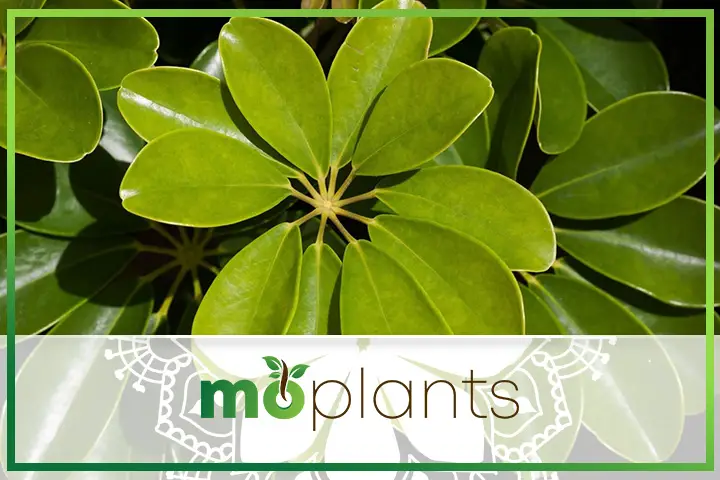
While your easygoing umbrella plant can grow on its own, showing it some love and attention can add years to its lifespan while making its foliage look more appealing.
Here are some tips on how to grow umbrella plants that all home gardeners will find helpful.
Placement
Umbrella plants can grow pretty much anywhere you place them. However, if you want them to flourish, please choose a spot that receives bright and direct sunlight. For bushier foliage, make sure to slightly rotate the plant every few weeks to grow symmetrically, like a tree.
Meanwhile, if you place it in a relatively dark corner of your home, your umbrella plant will grow at a slower pace. It will also have a more leggy appearance with lesser leaves.
Ideal Temperature
If you want to grow umbrella plants inside your home, you should ensure they are kept in temperatures between 60 and 75 degrees Fahrenheit.
Being a tropical plant, Schefflera does not do well in cold conditions. Therefore, if you are growing it on your terrace or patio, make sure to bring it indoors as soon as the temperature drops below 60 degrees Fahrenheit. Moreover, protect the houseplant from cold drafts and keep it away from vents.
Humidity Level
Umbrella plants prefer average humidity, so you don’t have to worry about investing in a humidifier unless you live in a particularly dry area. Nonetheless, if the air around the plant is arid, it can make your green beauty susceptible to pest infestation and diseases.
To remedy the situation, consider occasionally misting the plant with plain water. You can also place its container on top of a pebble tray filled with water. When the moisture evaporates, it will provide artificial humidity to your umbrella plant.
Exposure to Sunlight
Schefflera may tolerate dull corners, but it thrives in bright and indirect light.
During the summer months, you can move your potted plant to a partially shaded location outdoors, where it can receive sufficient sunlight without being exposed to intense sun rays. You must bring the plant indoors and place it near an open window to ensure your plant doesn’t get leggy or droopy in the winter months.
Watering Frequency
Watering the plant once a week during the growing season is more than enough. However, if you are having difficulty determining whether your umbrella tree plant requires more water, touch the top layer of the soil. If the potting media feels completely dry, you can water the plant. Meanwhile, if you feel some moisture in the soil, hold off watering until the pot dries out.
It is important to remember that Schefflera is more tolerant of dry than wet soil. Also, overwatering the plant may potentially kill it.
Potting Mix
You should ideally grow umbrella plants in slightly acidic soil with a pH level between 6.0 and 6.5. Choose a rich, loose, and well-draining potting mix with moist compost to help your houseplant grow at a fast pace.
Infographic
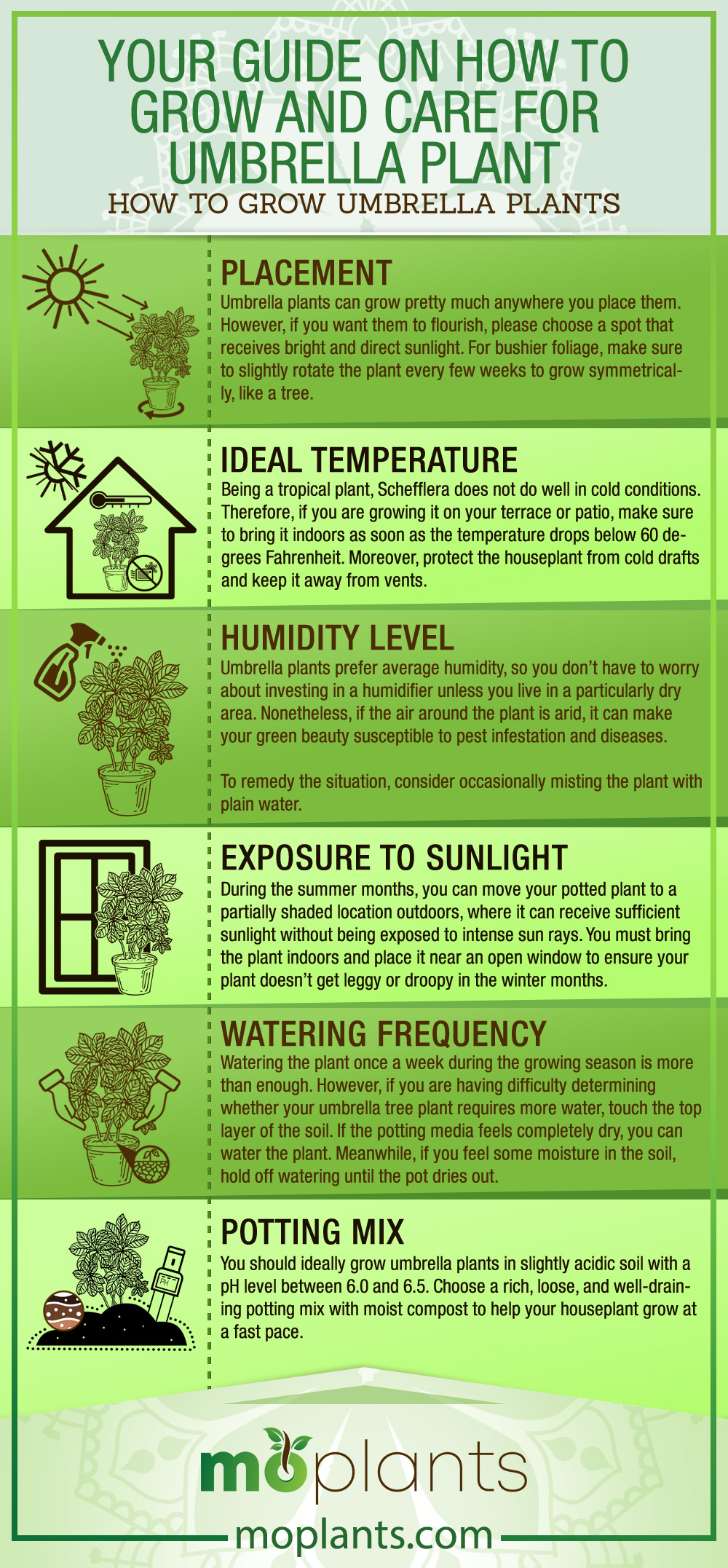
Umbrella Plant Propagation Method
The most effective way to propagate your umbrella plant is through its cuttings. To get started, cut a six-inch section of a stalk and remove all but five leaves from its top. It is recommended to cut the stem at a 45-degree angle to promote new growth.
Next, dip the cut end of the stalk in a rooting hormone and plant it into a smaller container filled with moist potting mix. If you live in a humid environment, you can place the young plant near a window so it can receive bright but indirect sunlight. Though if you live in a drier region, you may want to moisten the soil and cover the plant with a loosely tied plastic bag so it can retain moisture.
Keep adding water to the container as needed to keep the soil moist. Once the roots begin to develop, remove the plastic bag and allow the baby plant to grow freely.
Please note that this umbrella plant propagation method can take a few tries. So, if your first cutting fails to sprout good roots, you can discard it and start anew.
Umbrella Plant Care Tips
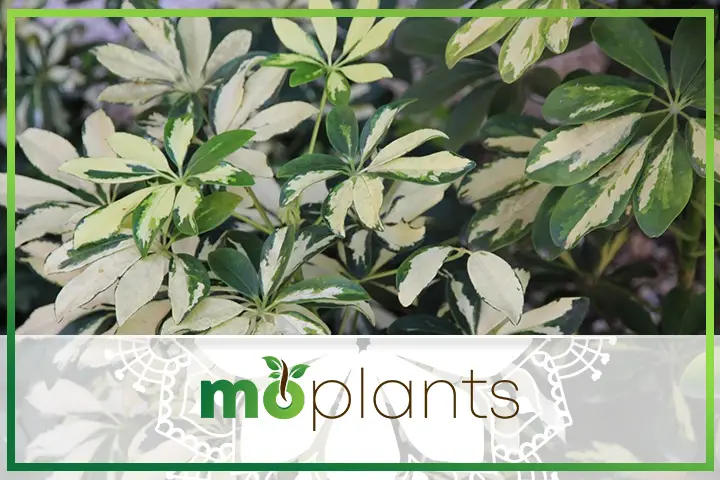
These are some of the top umbrella plant care tips that can keep your plant fresh and happy for a long time.
Pruning and Trimming
You can prune your Schefflera with sharp and sterile gardening shears whenever you think it has grown too leggy. This houseplant rebounds rather quickly due to its fast growth rate, so you don’t have to worry about accidentally trimming too much of the foliage.
Moreover, if your plant has bloomed, don’t forget to remove the dead flowers from the stalks so the foliage can receive proper nourishment.
Cleaning the Plant
Excessive dust and debris on the leaves of your tropical plant can attract certain bugs and pests.
Therefore, to keep the foliage lustrous and aesthetically appealing, consider misting it occasionally and wiping the leaves with a soft cloth. This umbrella plant care tip will make your houseplant the focal point of any room.
Discard Excess Water
While it is crucial to plant Schefflera in a pot with an adequate drainage hole, you must also remember to discard the excess water that ends up in the saucer placed underneath the container.
These houseplants don’t like wet feet. Sitting in water for too long may eventually result in root rot, ultimately killing the plant.
Fertilizer
Umbrella tree plants are relatively heavy feeders. You can use a well-balanced fertilizer to feed them every month. Alternatively, you can use two applications of slow-release pellets during the growing seasons to provide the plant with additional nutrition.
Please do not use fertilizer during the dormant season as it may stress out the plant.
Repotting
In an average home environment, umbrella plants can grow up to three feet every year. However, despite their height, these exotic houseplants do well in small containers until they reach maturity.
You can repot your umbrella tree plants every two to three years by gently pulling them out and moving them to a bigger container. Add some moist compost to the soil and wait for three months before feeding the plant again.
Most home gardeners prefer using terracotta pots to grow umbrella plants, which is a great option. But depending on your preference, you can also use a ceramic container for your houseplants.
Are Umbrella Plants Toxic?
Unfortunately, umbrella plants can be toxic to children and pets. The calcium oxalate crystals in the plant sap have sharp edges, which can cause severe irritation if ingested. So, if you have toddlers or curious critters in the house, make sure they cannot reach the leaves and stems of these houseplants.
Common Signs of Umbrella Plant Poisoning
Here are some of the most common symptoms of umbrella plant poisoning among pets.
If your cat or dog is exhibiting any of these symptoms after nibbling at the umbrella plant, be sure to get in touch with your vet. Meanwhile, if you believe your child may have ingested any part of the plant, take them to the nearest ER as the toxic sap can cause severe skin and oral irritation among humans.
Common Umbrella Plant Problems and How to Solve Them
Let’s look at some of the most common problems you may encounter while growing umbrella plants indoors, along with tips on troubleshooting them.
Yellowing Leaves
Some yellowing is common in umbrella plants, especially as the leaves grow old. But if several leaves have begun turning yellow, it may indicate overwatering. To test the cause, insert your fingers in the soil. If the soil feels even slightly moist, hold off watering until at least 75% of the soil is dry to touch. You should also move your plant to a warmer and sunnier location.
Another leading cause behind yellowing leaves is the lack of humidity. To counter this problem, make sure to mist the foliage every few days.
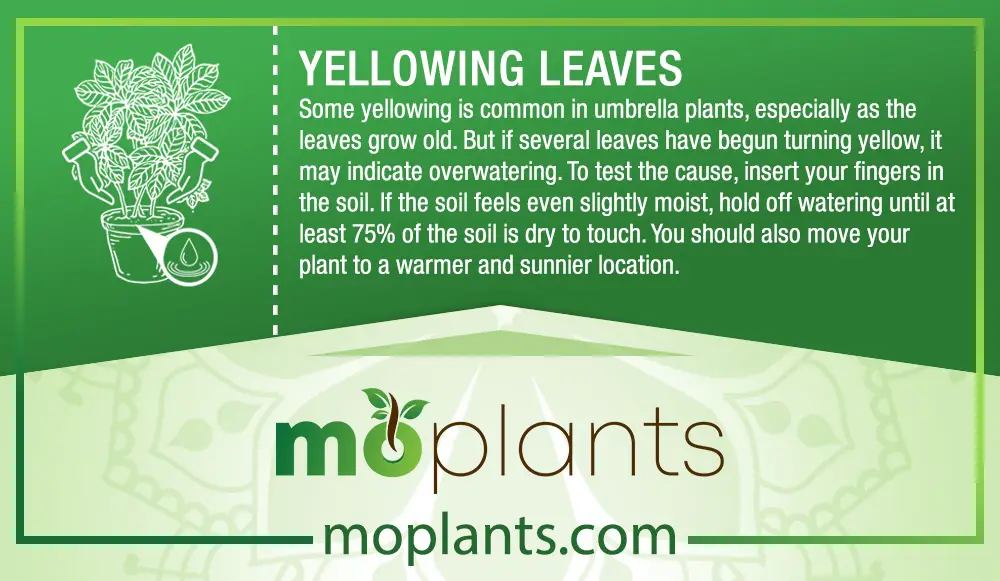
Falling Leaves
Lack of water, insufficient sunlight, and extreme temperatures are the most significant reasons umbrella plants begin shedding their leaves. A pest infestation, stress due to repotting, and overfeeding can also result in the plant losing its foliage at an alarming rate.
To solve this problem, you first need to determine if your plant is getting enough sunlight and water. You may also want to cut back on fertilizer if you are applying it too frequently or add fertilizer if you haven’t used it in months. Additionally, keep the temperature within the recommended range and look for ways to increase the humidity level in your home.
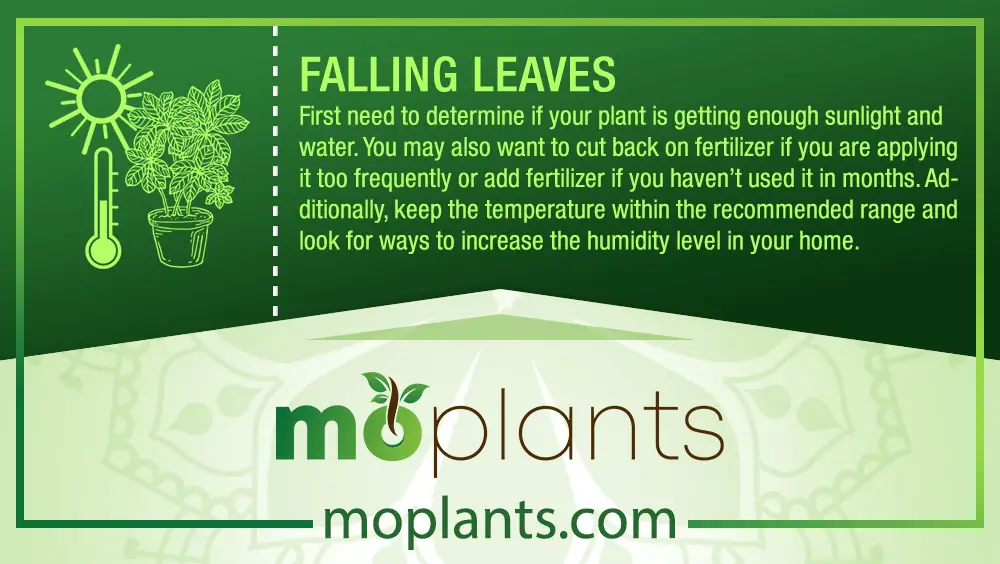
Lack of Growth or Pale Leaves
If your umbrella plant is not sprouting new leaves or the existing ones look extremely pale, you may need to feed the plant, providing it’s the growing season. Follow the manufacturer’s instructions and refrain from overfeeding the houseplant to make up for the lack of fertilizer.

Common Pests and Diseases
Schefflera plants are susceptible to spider mites, aphids, scales, and mealybugs. More often than not, overwatering, insufficient sunlight, and dry air are the main reasons pests are attracted to these houseplants.
With light infestations, washing the foliage with insecticidal soap and water usually does the trick. For heavier infestations, consider applying horticultural oil on the affected areas as required.
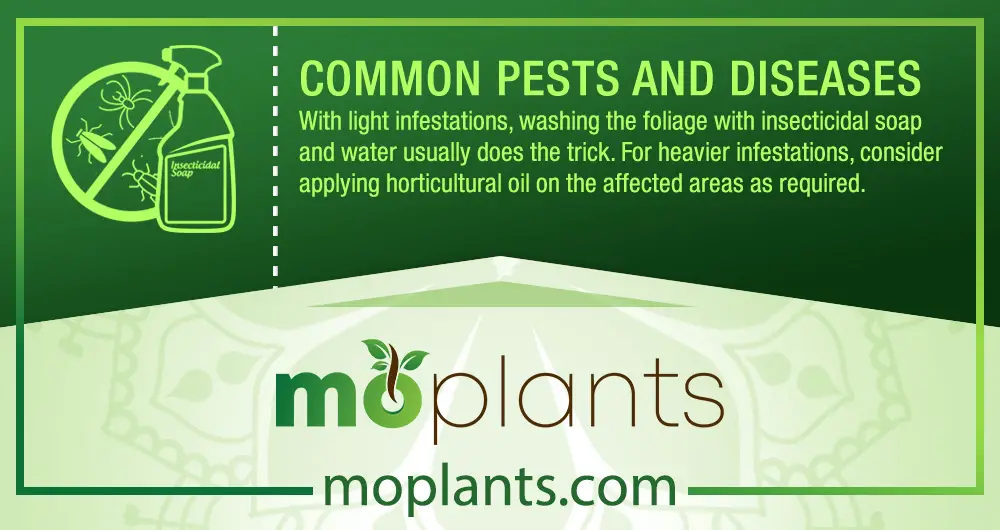
Infographic

Popular Varieties of Umbrella Plant
Now that we know the umbrella plant propagation and care tips along with how to solve its most common problems, it’s time to look at some of its most popular varieties.
Alpine Schefflera
Mostly found in the tropical forests of Asia, this robust species of Schefflera plant features lush foliage with an attractive red tint. Compared to other well-known varieties, this houseplant is more tolerant of cool temperatures. Moreover, it can grow as tall as six feet.
Gold Capella Schefflera
A popular variety of Dwarf Schefflera, Gold Capella boasts glossy dark green leaves that stand out for their golden-yellow variegation. It is a compact plant that can be a perfect addition to your workstation, dining take, or side table. Like most other types of umbrella plants, Gold Capella Schefflera also flourishes in bright but indirect light.
Trinette Schefflera
It is yet another popular variety of variegated arboricola plants. You can grow this plant as an ornamental shrub to freshen up your interior design or place it outdoors to add a splash of color to your patio. This showy houseplant is known for its distinctive creamy yellow variegation that creates a striking contrast against the green base.
Umbrella Plant FAQs
These are some of the most frequently asked questions about umbrella plants.
Do umbrella plants like to be misted?
Since umbrella plants are tropical, they prefer moist air and warm temperature. Hence you can mist the foliage occasionally to keep the plant shiny and hydrated.
How to make an umbrella plant bushy?
Strategic trimming and pruning are essential to make your umbrella plant appear fuller and bushier. You should also rotate it often, so all sides of the plant receive equal sunlight.
How long do umbrella tree plants live?
In an average home environment, these exotic plants can live up to 25 years.
To summarize, umbrella plants or umbrella tree plants are among the most underrated houseplants. They are not dramatic and very forgiving of neglect, making them an ideal companion for brown-thumbed gardeners or those who don’t have enough time to look after their houseplants. In addition, you only have to water the plant once every week or two and ensure it receives ample indirect sunlight.

